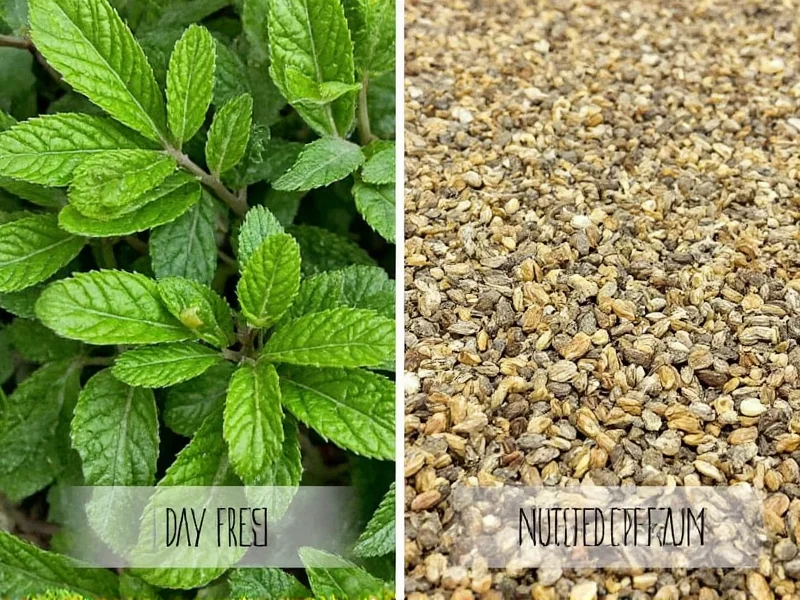Understanding the differences between fresh and dried oregano transforms your cooking results. This versatile herb behaves distinctly in its two forms, affecting flavor profiles, potency, and ideal applications in the kitchen. Chefs and home cooks alike benefit from knowing precisely when to reach for each variety.
Flavor Profile Comparison
Fresh oregano offers a complex flavor profile with bright, grassy notes, subtle citrus undertones, and a delicate floral aroma. The moisture content preserves volatile oils that create this nuanced taste experience. Dried oregano undergoes a transformation during the dehydration process, concentrating certain compounds while losing others. This results in a more intense, earthy flavor with pronounced bitterness and reduced floral notes.
Food science explains this difference: drying concentrates non-volatile compounds while evaporating the more delicate volatile oils. The result is a shift in flavor balance where earthy, pungent notes become dominant in dried oregano, while fresh maintains its brighter characteristics.
Substitution Ratios and Potency
When substituting between fresh and dried oregano, understanding the potency difference is crucial. The standard conversion ratio follows this rule:
| Fresh Oregano | Dried Oregano |
|---|---|
| 1 tablespoon (15ml) | 1 teaspoon (5ml) |
| 3 tablespoons (45ml) | 1 tablespoon (15ml) |
| 1/4 cup (60ml) | 4 teaspoons (20ml) |
This 3:1 ratio (fresh to dried) accounts for the concentration that occurs during drying. However, this isn't merely about volume—it's about flavor intensity. Dried oregano contains approximately three times the flavor compounds per volume compared to fresh. When substituting, always start with less dried oregano than you think you need, then adjust to taste.
Best Culinary Applications
Certain cooking techniques and dishes benefit from specific oregano forms:
When to Use Fresh Oregano
- Mediterranean salads - Toss fresh leaves into Greek salads for vibrant flavor
- Finishing touches - Sprinkle over pizza or pasta just before serving
- Light sauces - Incorporate into vinaigrettes and delicate sauces
- Grilled vegetables - Mix with olive oil for vegetable marinades
- Fresh salsas - Combine with tomatoes and onions for vibrant toppings
When Dried Oregano Shines
- Long-simmered sauces - Allows time for flavors to fully develop in tomato sauces
- Meat rubs - Blends well with other dried spices for seasoning blends
- Bread doughs - Distributes evenly throughout baked goods
- Marinades for tough cuts - Penetrates deeply during extended marinating
- Dry spice mixes - Maintains consistency in blends like Italian seasoning
Storage Methods and Shelf Life
Proper storage significantly impacts oregano's flavor retention:
Fresh Oregano Storage
Treat fresh oregano like cut flowers. Trim stems, place in a glass with water, and cover loosely with a plastic bag. Store in the refrigerator for up to 10-14 days. For longer storage, chop leaves and freeze in olive oil cubes or dry using a food dehydrator.
Dried Oregano Preservation
Store dried oregano in an airtight container away from light and heat. Properly stored, it maintains peak flavor for 6-12 months. After this period, the herb gradually loses potency but remains safe to use. To test freshness, rub a small amount between your fingers—if the aroma is weak, it's time to replace your supply.
Nutritional Differences
Both forms offer similar nutritional profiles, but with some notable variations. Fresh oregano contains slightly more vitamin C and certain volatile compounds that diminish during drying. Dried oregano, due to its concentrated nature, provides more antioxidants per teaspoon. Both forms contain rosmarinic acid and thymol, compounds associated with potential health benefits.
Research published in the Journal of Agricultural and Food Chemistry indicates that drying can increase the concentration of certain phenolic compounds while reducing others. The overall antioxidant capacity remains significant in both forms, making oregano a valuable addition to a health-conscious diet regardless of form.
Common Mistakes to Avoid
Cooks frequently make these errors when working with oregano:
- Adding dried oregano too late - Unlike fresh herbs, dried oregano needs time to rehydrate and release flavors. Add early in cooking for best results
- Using equal volumes for substitution - Remember the 3:1 fresh-to-dried ratio to prevent overpowering dishes
- Storing dried oregano in clear containers - Light degrades flavor compounds; use opaque containers
- Crushing dried oregano with fingers - Use a mortar and pestle for better flavor release
- Using dried oregano in raw applications - Its concentrated bitterness doesn't mellow without cooking
Maximizing Flavor in Your Cooking
Professional chefs employ these techniques to get the most from oregano:
- Bloom dried oregano - Heat dried oregano briefly in olive oil before adding other ingredients to release essential oils
- Layer both forms - Use dried oregano early in cooking and fresh as a garnish for complex flavor profiles
- Pair with acid - Oregano's flavor shines when balanced with lemon juice or vinegar
- Chop fresh oregano just before use - Prevents oxidation and flavor loss
- Revive stale dried oregano - Place in a warm oven (170°F/75°C) for 5 minutes to refresh flavor











 浙公网安备
33010002000092号
浙公网安备
33010002000092号 浙B2-20120091-4
浙B2-20120091-4